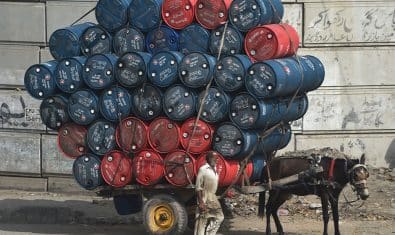Adding to the impending food shortage due to the recent floods, the upcoming Rabi season is expected to see a decrease in wheat production as farmers switch to alternative crops like maize and rice due to dwindling profit margins and high input costs, adversely affecting the country’s food security.
Wheat production area fell by 2.1 percent to 8,976,000 hectares in 2021-2022. The area was 9,168,000 hectares in 2020–21. Furthermore, output fell by 3.9 percent to 26.394 million tonnes, compared to 27.464 million tonnes the previous year.
The decrease in yield has been attributed by officials to the decline in acreage, water shortages, drought conditions at the time of sowing, lower fertilizer offtake, and heatwaves in March and April. This decline occurred despite the minimum support price being raised from Rs. 1,850 per 40 kg to Rs. 2,200.
In spite of current conditions, the Federal Committee on Agriculture has set a target for the Rabi season of 2022–23 of producing 28.4 million tonnes of wheat on an area of 9.3 million hectares. The target, however, appears unlikely considering the vast areas of agricultural land that have been inundated in Sindh and some districts of Punjab.
The high cost of fertilizer, which could further reduce its uptake this season, coupled with expensive wheat seed, may have also been overlooked by the officials.





















